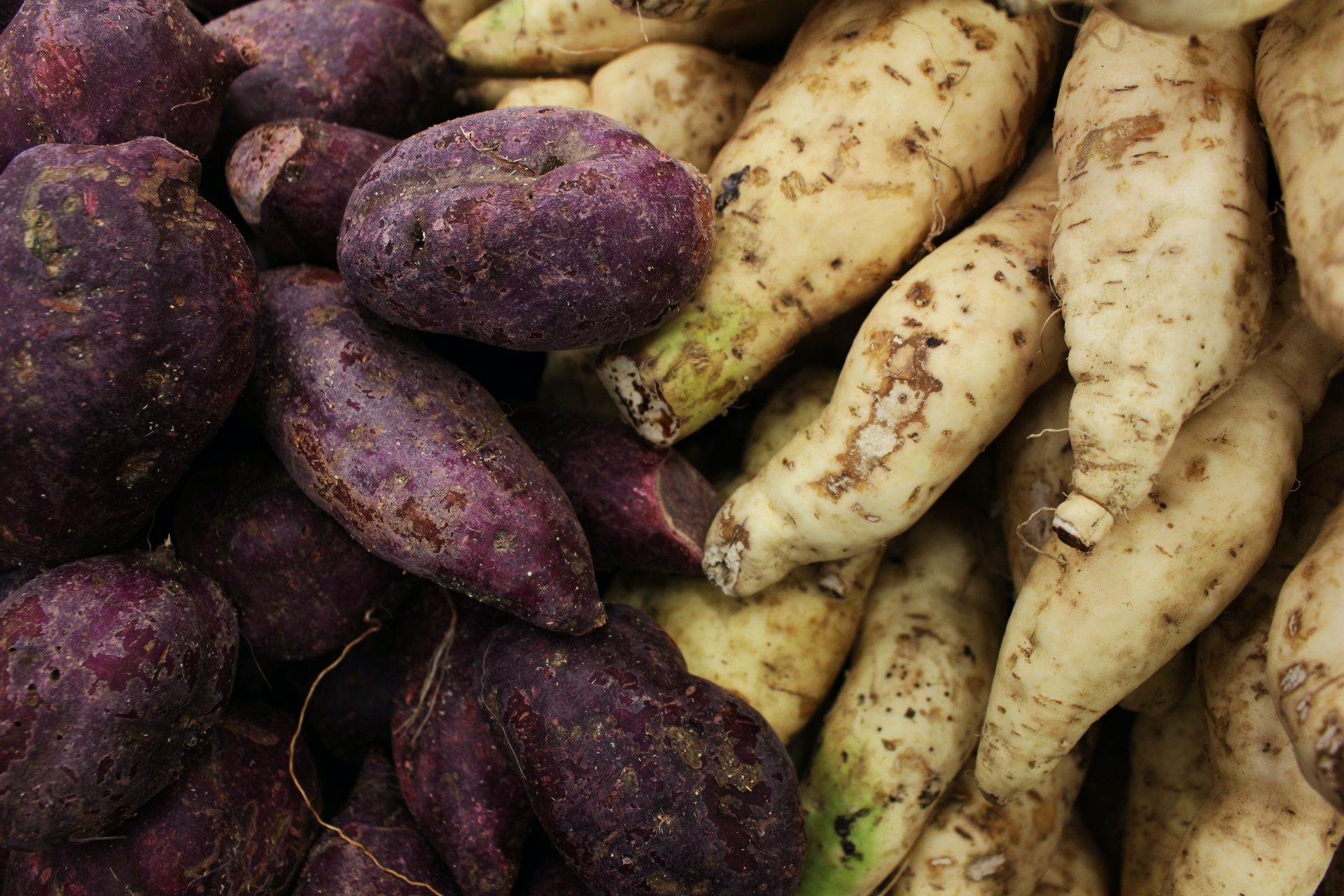
We asked the experts to explain everything we need to know about carbs, fats and proteins.
If you’ve been on Instagram at any point since 2014, you’ve probably heard the word ‘macro’ being used. While the boom in ‘macro counting’ and associated eating habits has happened within the fitness world, macros – short for macronutrients – aren’t just something that can get you stronger or fitter. They’re actually something that’s in all food, and is pretty crucial to understand.
Unfortunately, a lot of us don’t have a basic understanding of what’s in our food. We hear so much about calories, but not about the actual nutrients that make up those calories. For example, do you actually know what kind of fuel baked beans are? Or the sources of energy you get from an avocado? These are the things that fuel our brain and body every day, and yet there’s a ton of misinformation and demonisation about them. So let’s clear it up…
What is a ‘macro’?
A macronutrient is the thing that your body needs in large supply, unlike micronutrients, which are vitamins and minerals that are found in smaller amounts in foods. There are three macronutrients that the body needs for energy: proteins, carbs and fats. Each of them has a different role in helping the body function.
You may also like
High-protein diets are everywhere, but does everyone need more of the macronutrient?
Protein
“Dietary protein is the key ingredient in muscle repair, growth and strength development, all of which are important to your overall health regardless of your fitness goals,” writes nutritionist Rhiannon Lambert in her book A Simple Way To Fuel Fitness.
Protein contains four calories per gram, so a food item that contains 20g of protein contains 80 calories just from that macronutrient. High-protein foods include lean meats (like chicken breast), fish and milk. Plant sources of protein, like tofu, lentils and legumes, are also great options.
How much protein you need depends hugely on your activity levels. While the recommended daily intake suggests women need 0.75g of protein per kg of bodyweight. That would be around 52g of protein a day. “These guidelines are most likely to be relevant for an average woman who walks her dog daily and goes to a gym class once a week… Things are slightly different, however, for those who are more active. Protein requirements are greater due to increased demands placed on the body for repair and recovery,” writes Lambert.

Carbs
Carbohydrates are the body’s preferred energy source, providing “a key fuel for the brain, central nervous system and for muscular work,” explains Lambert. “Carbohydrates are broken down into glucose and then stored as glycogen in your liver and muscles. The ability to concentrate and focus both in daily life and during training is possible due to the adequate supply of energy – from blood glucose – to the brain.”
Much like protein, carbs contain four calories per gram and activity levels can impact how many we need per day.
Light exercise (such as pilates, walking or active people on rest days): 2-4g per kilogram of bodyweight
Moderate exercise (around an hour of heart-raising activity, such as a run or gym session): 3-5g per kilogram of bodyweight
Intense exercise (between 1-3 hours of moderate or high-intensity activity a day): 5-7g per kilogram of bodyweight
Very intense exercise (such as on a competition or race day): 8g per kilogram of bodyweight
You may also like
Carbohydrates: why carbs are so important for exercise, recovery and brain function
For example, a 70kg woman who is doing an hour-long gym session and eating around 3-5g of carbs per kilogram of bodyweight would eat 210g-350g of carbs a day. One serving of pasta (around 75g when dry) contains 60g of carbs, and half a tin of chickpeas has around 16g of carbs. Carbs are often the most demonised macronutrient, yet they’re usually the main components of vegetables – and we’re not just talking obviously starchy veg like potatoes, but also things such as peppers, broccoli and sweetcorn.
Carbs can be ‘simple’ – such as sweets, jam, some fruits, ‘white’ breads and pasta – and these are easier to digest and more quickly turned into glucose by the body. Or they can be ‘complex’ – such as wholemeal items, fibre-rich vegetables like potatoes and grains and legumes – and move slower through the GI tract. But it’s more nuanced than one being better or worse than the other. “For example, a slice of cake will often have a lower GI than a piece of fruit owing to the fat and fibre contained in the cake as well. But I think we all know which we should be consuming more of,” says Lambert.
Dietician Renee McGregor agrees, writing in her e-book Training Food: “10 jelly babies provide 60g of carbohydrate. But a 300g sweet potato or six large carrots provides the same. It is obvious which option will be the more filling… Having said that, in certain training situations, jelly babies may be the preferred fuel.”

Fat
Fats are essential for our body. They make up part of the structure of all cell membranes, brain tissue, bone marrow, nerve sheaths (which protects our nerves) and acts as insulation and a cushion for your vital organs,” explains Lambert. “Fat also plays a key role in the absorption of certain vitamins including A, D, E and K.”
Fats are also particularly important for women, as they help with the transfer of hormones around the body and tend to use more fat for energy than men. As with carbs, there are two different types of fats. “The ratio between saturated fatty acids and unsaturated fatty acids is quite important,” Lambert tells Strong Women. “It’s crucial for people to eat more unsaturated fats, like avocado, nuts and olive oil. Things that are solid at room temperature but melt when heated, such as butter and coconut oil, are saturated fats and want to be kept to a minimum.”
You may also like
Omega-3: a dietician explains the benefits of fatty acids
The current government guidelines recommend that no more than 10% of daily energy comes from saturated fats, and McGregor “generally recommends you take on around 1g of fat per kilogram of bodyweight a day and that the majority of this comes from [unsaturated] fats. So for a 60kg athlete this will be 60g.” However, there are certain circumstances when people may need more than this. As fats have 9 calories per gram, they are denser and tend to take longer to digest.
The problem is that very rarely is food a source of just one macronutrient, so unless you’re eating your macronutrients in pure portions (a chicken breast (protein), a baked potato (carbs) and a spread of butter (fats)) you need to think a little harder at what’s making up your food.
For example, a slice of bread may be seen as a carbohydrate, but if it’s packed with seeds and wholegrains, it will also supply fats and proteins. Eggs contain fat in their yolk but shouldn’t be overlooked as an incredible source of protein. And, when looking at a spaghetti bolognese or a curry, for example, all macronutrients can be found in one sauce.
“If you’re a vegetarian, a lot of your sources of proteins will also contain carbohydrates. I think there’s a misconception that that’s bad, but no one should fear the carbs they are having in their beans and pulses because, actually, they’re a fabulous source of protein, fibre, and iron,” reminds Lambert.
Do you need to track macros?
Understanding the main components of your food is important. After all, getting a good balance of each of the macronutrients is something you need to stay alive and well. But understanding your sources of proteins, carbs and fats doesn’t mean keeping numerical tabs on your intake. “I don’t think most of the general population need to be concerned with tracking their macros,” says Lambert. “When we only see food as macronutrients, you lose the bigger picture.”
In the same way you should never just look at your food as a calorie, it can be problematic to just view it as a macro. The classic example of that is people who follow ‘if it fits your macros’ diets. This means that any food goes as long as it is within a personalised set of macronutrient targets, but often means that people opt for foods made of simple carbohydrates or saturated fats. After all, if all you care about is hitting 200g of carbs a day, it’s easy to lose sight of whether that number comes from jelly sweets or wholegrains.
You may also like
Calories on menus: “Calories aren’t always bad – can we stop the shame?”
The best thing to do is use your understanding of the macronutrients to have a balanced diet. The NHS Eat Well Guide suggests that around a third of your food is made from starches and complex carbohydrates, that we should have a palm-sized portion of protein with each meal and focus on getting in enough fruits, vegetables and fibre.
“Of course, nutrition should be personalised but I think tracking to the gram can be quite a disordered way to live. We don’t eat numbers,” reminds Lambert. “Just know where to get your protein from, where to get your carbs from and where to get your fats from. Aside from that, I would think about food as an emotional, healthy, nourishing thing full of vitamins, minerals and taste. There are so many different aspects to what we eat, and finding meals that are a source of pleasure as well as a diet that can be sustained is the most important thing.”
Images: Getty / Pexels
Source: Read Full Article